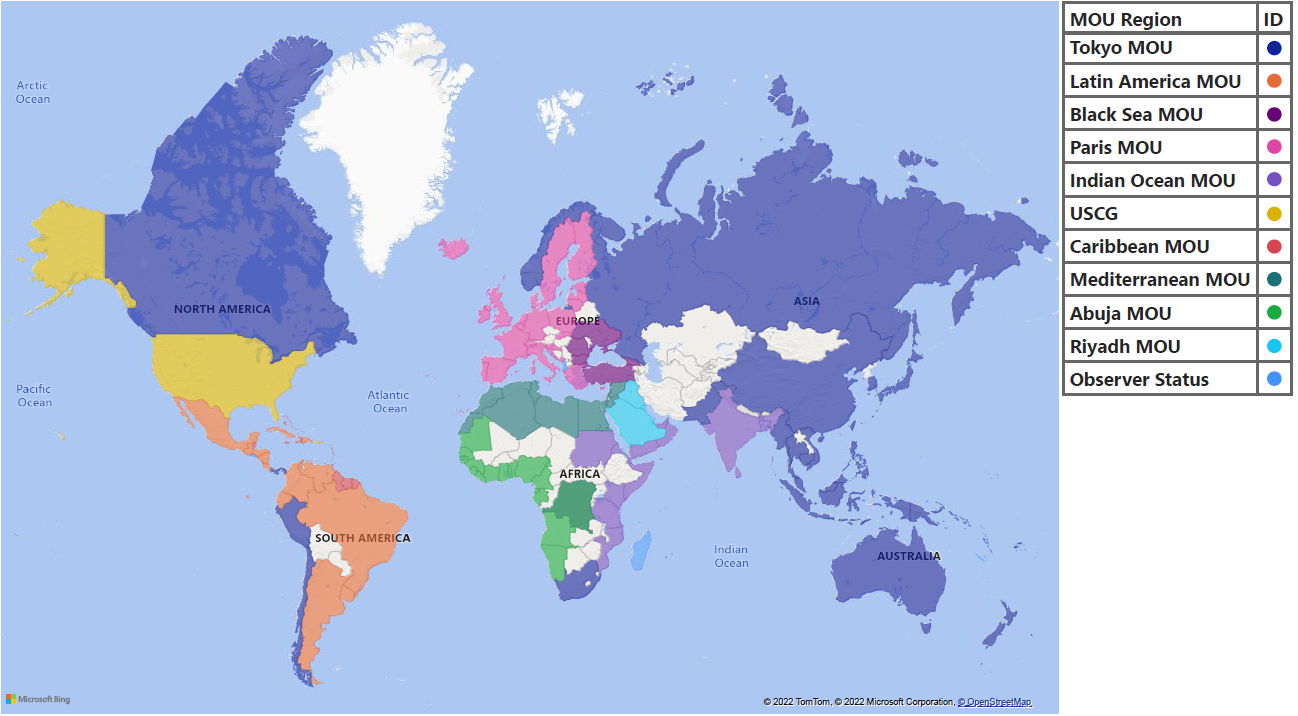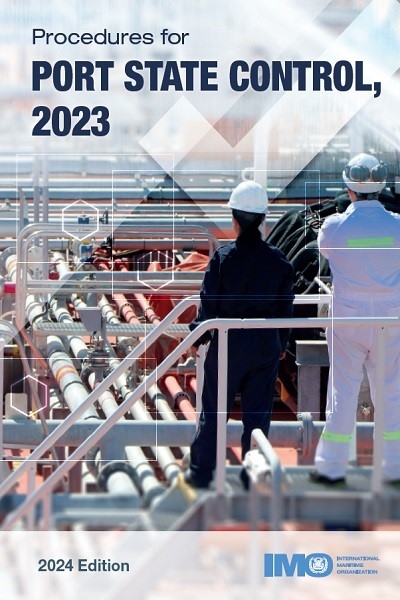If you’re part of the maritime industry, you have probably heard the term “Port State Control” (PSC) inspections multiple times before. But what exactly do these inspections involve, and why are they so important? Port State Control inspections serve as important checkpoints for making sure that foreign vessels entering national ports comply with international safety, environmental, and operational standards. Let’s dive deeper into what Port State Control entails, the detailed procedures, and the essential role it plays in maintaining maritime safety and environmental protection.

What is Port State Control (PSC)?
Port State Control (PSC) is an inspection system where foreign ships undergo checks at national ports to verify compliance with specific international regulations through established procedures. The primary goal is to make sure that the vessel, its equipment, and crew meet the rigorous safety, security, and environmental protection standards set by the International Maritime Organization (IMO). While the flag state, the country where the ship is registered, bears the main responsibility for enforcing compliance, Port State Control inspections provide a “second line of defence.” This means that any ship found to be substandard, unsafe, or non-compliant can be detained or required to make immediate repairs, thus keeping potential hazards at bay.
History and Development of PSC
Port State Control (PSC) was established in the 1960s by the International Maritime Organization (IMO) to enforce compliance with international maritime regulations. The 1974 SOLAS Convention included PSC provisions, which marked a significant shift in maritime safety practices. In the 1980s, regional PSC regimes like the Paris MoU emerged, setting inspection standards and preventing substandard ships from bypassing scrutiny by moving regions.
In 1995, the IMO strengthened PSC with the STCW Convention, emphasizing crew training and competence. Since the 2000s, PSC inspections have expanded significantly, with conventions like MARPOL reinforcing the PSC’s role in preventing pollution. Today, over 100 countries participate in PSC regimes, ensuring maritime safety, environmental protection, and fair competition across the industry.
PSC Regimes and Organizations

Port State Control (PSC) operates under a network of ten regional regimes, each with its own secretariat responsible for coordinating inspections and enforcing compliance with international regulations. The Paris MoU, established in 1982, was the first of these regimes and remains one of the most influential. Other notable regimes include the Tokyo MoU, the Indian Ocean MoU, and the Black Sea MoU, each playing a critical role in their respective regions.
The International Maritime Organization (IMO) works closely with these regions. The International Labour Organization (ILO) also plays a key role in PSC, particularly concerning the inspection of ships’ crew and working conditions. The ILO’s involvement ensures that seafarers’ rights and welfare are protected, contributing to overall maritime safety and compliance. In addition to international organizations, national bodies like the Union Public Service Commission (UPSC) and the State Public Service Commission (SPSC) are involved in Port state control. These commissions are particularly important in the recruitment and training of PSC officers, ensuring that they are well-equipped to carry out their duties. The Indian Constitution also plays a role in PSC, particularly in regulating maritime trade and protecting the marine environment.
Inspection Process of Port State Control
Port State Control inspections follow structured control procedures to ensure consistency and efficiency in inspections. The IMO’s guidelines are essential in providing a clear framework for PSC officers, allowing them to conduct inspections in a systematic and standardized manner. These procedures cover a range of inspection areas, from the ship’s crew certification to the physical conditions of the ship and equipment. Here’s a closer look at the general steps involved in a PSC inspection:
- Initial Boarding and Documentation Check
When a Port State Control Officer (PSCO) boards a vessel, the first step is a basic document check. This includes making sure that the ship has the correct, up-to-date certifications and that the crew holds valid qualifications. Certificates related to safety, security, environmental compliance, and the crew’s training are all subject to verification.
- Visual Inspection
After reviewing documents, the PSCO visually inspects the vessel’s external and internal condition to check for visible signs of damage or wear that could compromise the ship’s safety. This part of the inspection allows the officer to gauge the overall condition of the vessel and decide whether further, more detailed inspections are necessary.
- Determining “Clear Grounds”
If the PSCO identifies any issues or has reasonable suspicion based on initial findings, they can establish “clear grounds” to proceed with a more detailed inspection. Clear grounds may arise if documentation is missing, crew members are not familiar with safety protocols, or if there are visible signs of deterioration.
- Detailed Inspection
Should clear grounds be identified, the PSCO will conduct a detailed inspection that involves more thorough checks on critical equipment and operational practices. This may include checking the fire safety systems, emergency preparedness, and pollution prevention equipment.
- Detention and Reporting
If significant deficiencies are found that compromise safety, the environment, or operational standards, the PSCO has the authority to detain the vessel. Detention is a serious step, taken only when a vessel presents immediate danger or serious non-compliance. In such cases, the ship must rectify the deficiencies before it is allowed to leave the port. A detention report is filed and sent to the flag state and, in some cases, to other relevant maritime authorities.
Types of PSC Inspections
There are four types of PSC inspections, each with specific protocols based on the risk level of the ship and initial findings:
- Initial Inspection
This is the most basic level of inspection, where the PSCO checks the ship’s documentation and certificates, ensuring that the crew has the necessary training and that there are no immediate safety concerns. If everything appears satisfactory, the inspection ends here.
- More Detailed Inspection
When an initial inspection raises concerns or if clear grounds are present (such as missing documents or visible issues), a more detailed inspection is conducted. This involves examining particular areas of the ship, such as safety systems, structural integrity, and operational practices.
- Expanded Inspection
High-risk ships, such as oil tankers, passenger vessels, and vessels flagged under certain registries, are subject to expanded inspections. These are comprehensive checks, covering areas like firefighting systems, lifesaving equipment, and structural safety to ensure these high-risk vessels meet stringent safety and environmental standards.
- Concentrated Inspection Campaign (CIC)
A CIC is a collaborative inspection approach where a specific issue or area of compliance is targeted across multiple ports over a fixed period. These concentrated inspection campaigns are part of broader discussions addressing the implementation of IMO instruments and the overall management and analysis of PSC data. For example, a CIC might focus on the condition and operation of firefighting systems or ballast water treatment facilities. CICs are designed to raise industry awareness, enforce compliance, and improve standards across specific areas deemed critical.
What Happens During a PSC Inspection?
Once on board, a PSC officer typically begins with a review of essential documents. These include crew certificates, ship safety management certificates, and records for equipment like firefighting and pollution control systems. If these documents are in order, the officer performs a basic walkthrough to assess the ship’s general state. Here’s what happens next:
1. Checking for Clear Grounds
During the walkthrough, the PSCO looks for “clear grounds”—indications that the vessel might not be fully compliant. Clear grounds can include worn-out safety equipment, damaged lifeboats, unqualified crew, or obvious structural damage.
2. Addressing Deficiencies
If any deficiencies are found, they must be addressed immediately or within a specific timeframe. In severe cases, a ship may be detained until it can make the necessary repairs or adjustments to meet international standards.
3. Detention Protocols
Detention is implemented only when the PSCO finds significant deficiencies that endanger the crew, the vessel, or the environment. In some cases, a vessel may be allowed to sail to a nearby repair port for necessary fixes if they cannot be made at the inspection port.
Preparing for a PSC Inspection

Preparing a ship for a PSC inspection is an ongoing process that involves maintaining high standards at all times. Here are a few steps to ensure a vessel is ready:
1 Document Checks: Regularly update and review all necessary certificates, licenses, and crew documents to ensure they meet the latest standards.
2. Safety Equipment Maintenance: Conduct routine checks on safety equipment, ensuring all items like life jackets, fire extinguishers, and emergency tools are in working order and easily accessible.
3. Crew Training: Make sure the crew is trained on safety procedures, environmental regulations, and emergency protocols. Crew familiarity with safety drills and procedures is often checked by PSCOs.
4. Housekeeping: A clean, well-maintained ship shows that the vessel is operated with care. Proper housekeeping practices also reduce the risk of fire, contamination, and other hazards.
5. Regular Inspections: Periodic internal inspections allow the crew to identify and rectify minor issues before they turn into larger problems. A checklist-based approach to inspections can help ensure nothing is overlooked.
Conclusion
Port State Control inspections are a cornerstone of maritime safety, ensuring that ships entering ports meet international standards for safety, environmental protection, and operational integrity. Whether through an initial inspection or a targeted campaign, PSC inspections help prevent accidents, reduce pollution, and promote a fair playing field across the industry. By taking PSC inspections seriously and maintaining high standards, vessel operators contribute to a safer, cleaner, and more sustainable maritime environment for everyone involved.
FAQs about Port State Control
1. What happens if my ship fails a PSC inspection?
If a vessel has deficiencies, immediate repairs may be required. In cases of severe non-compliance, the ship may be detained until it meets the required standards.
2. Can PSC inspections vary by region?
Yes, PSC inspections are conducted under regional MoUs, each with its own focus areas. For instance, the Paris MoU covers Europe, while the Tokyo MoU operates in the Asia-Pacific region. All MoUs follow IMO standards.
What is a Concentrated Inspection Campaign (CIC) in PSC?
A Concentrated Inspection Campaign (CIC) focuses on a specific area, like lifesaving appliances, over a set time across various regions. These concentrated inspection campaigns aim to improve standards in targeted areas and are part of broader discussions addressing the implementation of IMO instruments and the overall management and analysis of PSC data.
4. How can I prepare my vessel for a PSC inspection?
Keep all documents and certificates up-to-date, maintain high housekeeping standards, and ensure the crew is trained on safety protocols. Regular equipment checks are also essential.